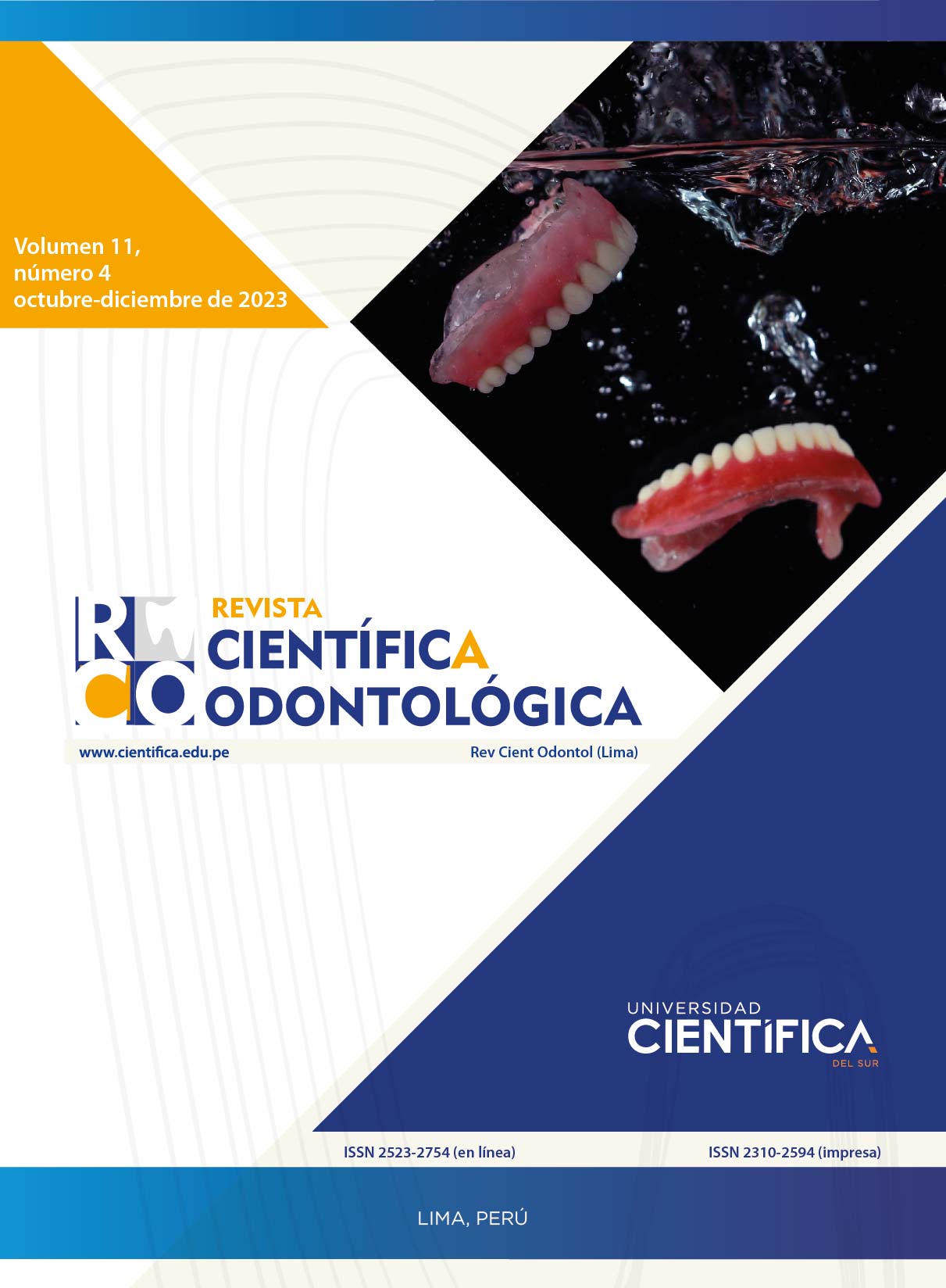Anxiety level and physiological response to invasive dental treatments. A longitudinal study
DOI:
https://doi.org/10.21142/2523-2754-1104-2023-175Keywords:
dental anxiety, arterial pressure, oxygen saturation, pulse, local anestheticsAbstract
Objective: To determine the relationship between the level of anxiety and the physiological response to invasive dental treatments. Materials and methods: A convenience sample of 180 patients was formed (73 men and 107 women) ≥18 years (range: 18-58) undergoing treatment with local anesthetics from three private dental offices in the city of Lima. Measurements were made before, during and after treatment on anxiety according to the IDARE questionnaire of 40 questions (20 trait and 20 state) and their physiological response was evaluated according to oxygen saturation (OS), pulse and blood pressure (BP) measured. with digital pulse oximeter and blood pressure monitor. The Friedman and Spearman correlation tests were used, working with a value of P<0.05. Results: Most patients had a medium level of anxiety before dental treatment (state 49.4% and trait 55.6%). OS, pulse and BP increased after application of the anesthetic and decreased at the end of treatment, with significant differences (P<0.05). Anxiety scores were significantly correlated only with pulse (state: r=0.238–0.564; trait: r=0.174–0.323) and BP (state: r=0.429– 0.699; trait: r=0.312–0.465) (P<0.05). Conclusion: State-trait anxiety had a positive relationship with the physiological dimensions of blood pressure and pulse before dental treatment with local anesthetics.
Downloads
Downloads
Published
Issue
Section
License

This work is licensed under a Creative Commons Attribution 4.0 International License.

Este obra está bajo una licencia de Creative Commons Reconocimiento 4.0 Internacional.












